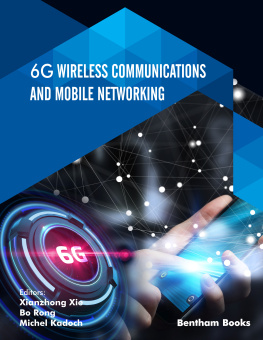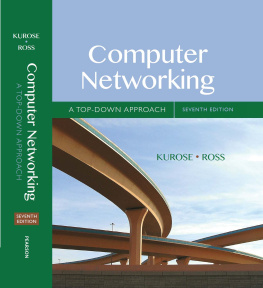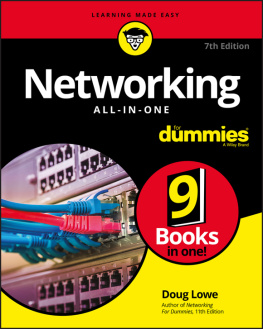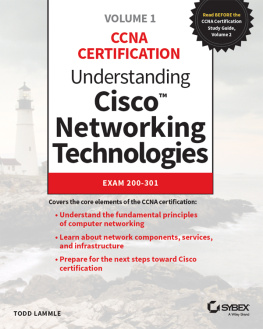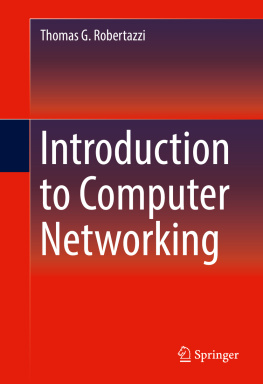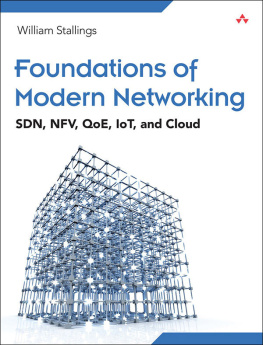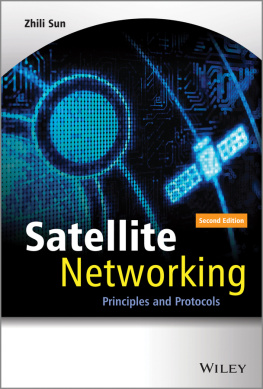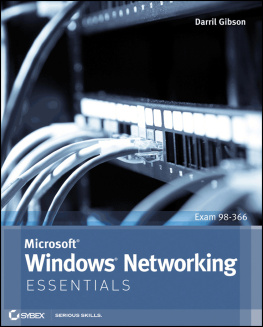
Network Evolution and Applications
Network Evolution and Applications provides a comprehensive, integrative, and easy approach to understanding the technologies, concepts, and milestones in the history of networking. It provides an overview of different aspects involved in the networking arena that includes the core technologies that are essential for communication and important in our day-to-day life. It throws some light on certain past networking concepts and technologies that have been revolutionary in the history of science and technology and have been highly impactful. It expands on various concepts like Artificial Intelligence, Software Defined Networking, Cloud Computing, and Internet of Things, which are very popular at present.
This book focuses on the evolutions made in the world of networking. One cant imagine the world without the Internet today; with the Internet and the present-day networking, distance doesnt matter at all. The COVID-19 pandemic has resulted in a tough time worldwide, with global lockdown, locked homes, empty streets, stores without consumers, and offices with no or fewer staff. Thanks to the modern digital networks, the culture of work from home (WFH) or working remotely with the network/Internet connection has come to the fore, with even school and university classes going online. Although WFH is not new, the COVID-19 pandemic has given it a new look, and industries are now willfully exploring WFH to extend it in the future. The aim of this book is to present the timeline of networking to show the developments made and the milestones that were achieved due to these developments.
Network Evolution and Applications
Vikas Kumar Jha, Bishwajeet Pandey, and Ciro Rodriguez Rodriguez

First edition published 2023
by CRC Press
6000 Broken Sound Parkway NW, Suite 300, Boca Raton, FL 33487-2742
and by CRC Press
4 Park Square, Milton Park, Abingdon, Oxon, OX14 4RN
CRC Press is an imprint of Taylor & Francis Group, LLC
2023 Vikas Kumar Jha, Bishwajeet Pandey and Ciro Rodriguez Rodriguez
Reasonable efforts have been made to publish reliable data and information, but the author and publisher cannot assume responsibility for the validity of all materials or the consequences of their use. The authors and publishers have attempted to trace the copyright holders of all material reproduced in this publication and apologize to copyright holders if permission to publish in this form has not been obtained. If any copyright material has not been acknowledged please write and let us know so we may rectify in any future reprint.
Except as permitted under U.S. Copyright Law, no part of this book may be reprinted, reproduced, transmitted, or utilized in any form by any electronic, mechanical, or other means, now known or hereafter invented, including photocopying, microfilming, and recording, or in any information storage or retrieval system, without written permission from the publishers.
For permission to photocopy or use material electronically from this work, access
Trademark notice: Product or corporate names may be trademarks or registered trademarks and are used only for identification and explanation without intent to infringe.
ISBN: 9781032299563 (hbk)
ISBN: 9781032299549 (pbk)
ISBN: 9781003302902 (ebk)
DOI: 10.1201/9781003302902
Typeset in Times
by codeMantra
Contents
Preface
Networking is one of the glorious technological evolutions in the history of mankind. Communication being one of the essential utilities to humans, network evolution plays an important role in making it more consumable. Communication is one of the essential requirements of our world and, more specifically, the society we live in. It simply means the exchange of information or the transfer of views, ideas, and feelings from one to another, from one to many. Communication has some key requirements such as two or more parties to communicate, a medium or a communication channel, a common language, and the information. The setup of the platform through which effective communication can happen is part of the communication technology that also includes a network setup. Communication technology has changed a lot with time and so has changed the network that has impacted our lifestyle. This book focuses on the evolution in the world of networking. One cant imagine the world without the Internet today; with the Internet and the present-day networking, distance doesnt matter at all. The COVID-19 pandemic has resulted in a tough time worldwide, with global lockdown, locked homes, empty streets, stores without consumers, and offices with no or fewer staffs. Thanks to the modern digital networks, the culture of work from home (WFH) or working remotely with the network/Internet connection has come to the fore, with even school and university classes going online. Although WFH is not new, the COVID-19 pandemic has given it a new look, and industries are now willfully exploring WFH to extend it in the future.
The aim of this book is to highlight the important aspects of networking and to represent the overall timeline of networking with the developments made and their impact on our life. This book presents the journey of Network Evolution: its pasthistory and success of the project ARPANET; its presentthe modern-age networking where the SDN and NFV are making networking software-centric and customizable at the software level; and its futurewhere AI will play a major role in making the network more agile and collaborative. This book highlights the important concepts, terminologies, and innovations in networking. This book also discusses how innovations in networking have impacted the human life and the digital disruption of the present age.
We still have certain milestones to achieve in the field of networking. Networking has a bright future ahead, and its evolution is a never-ending one. We all are somewhere a part of the network and are somewhere connected. This book is an effort to establish a connection, a network, with its readers.
Authors

Vikas Kumar Jha earned his MTech in computer science engineering from ABVIIITM, Gwalior, with specialization in advanced networks and a BE degree in electronics and communication engineering from RGPV Bhopal. He did his MTech thesis on Quantum Communication Networks and has five international journal publications under his name. His areas of research include communications, networks, cloud computing, and AI in telecommunication. He has received the following global certifications: Cisco Certifications (CCNARouting and Switching and CCNASecurity), Juniper CertificationJNCIA, Amazon CertificationAWS Certified Solution Architect Associate, and Microsoft CertificationAzure Cloud Fundamentals. He has more than 8 years of experience in telecommunication, including with Tata Communications Limited, formerly Videsh Sanchar Nigam Limited. He has also taught undergraduate engineering students as a lecturer in an engineering college for a year.

Prof Dr Bishwajeet Pandey earned his PhD in computer science engineering from Gran Sasso Science Institute, LAquila, Italy, under the guidance of Prof Paolo Prinetto, Politecnico DiTorino (World Ranking 13 in Electrical Engineering). He has worked as an assistant professor in the Department of Research, Chitkara University; Junior Research Fellow (JRF) in South Asian University; and lecturer at the Indira Gandhi National Open University. He completed a Master of Computer Applications (MCA) and a Master of Technology (VLSI) from ABVIIITM Gwalior along with R&D project from CDAC-Noida. He is an associate Professor at the Department of Computer Science and Engineering, Jain University, Bangalore, India. He has authored and coauthored 137 papers available on his Scopus Profile: https://www.scopus.com/authid/detail.uri?authorId=57203239026. He has 1400+ citations according to his Google Scholar Profile: https://scholar.google.co.in/citations?user=UZ_8yAMAAAAJ&hl=en. He has experience in the teaching of Innovation and Startup, Computer Network, Digital Logic, Logic Synthesis, and System Verilog. His areas of research interest are green computing, high-performance computing, cyberphysical systems, artificial intelligence, machine learning, and cybersecurity. He is on the board of directors of many startups of his students, e.g., Gyancity Research Consultancy Pvt Ltd.
Next page

